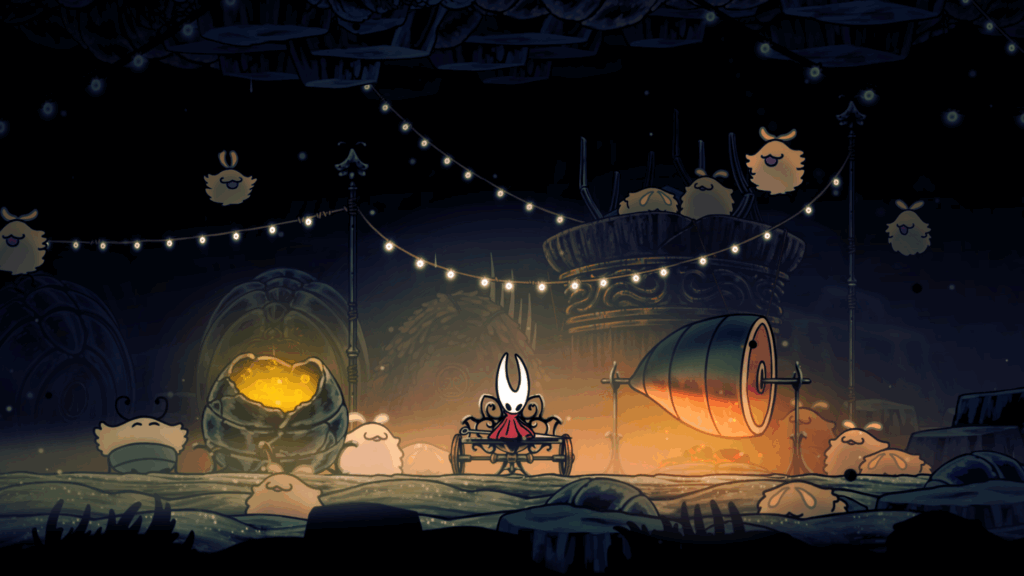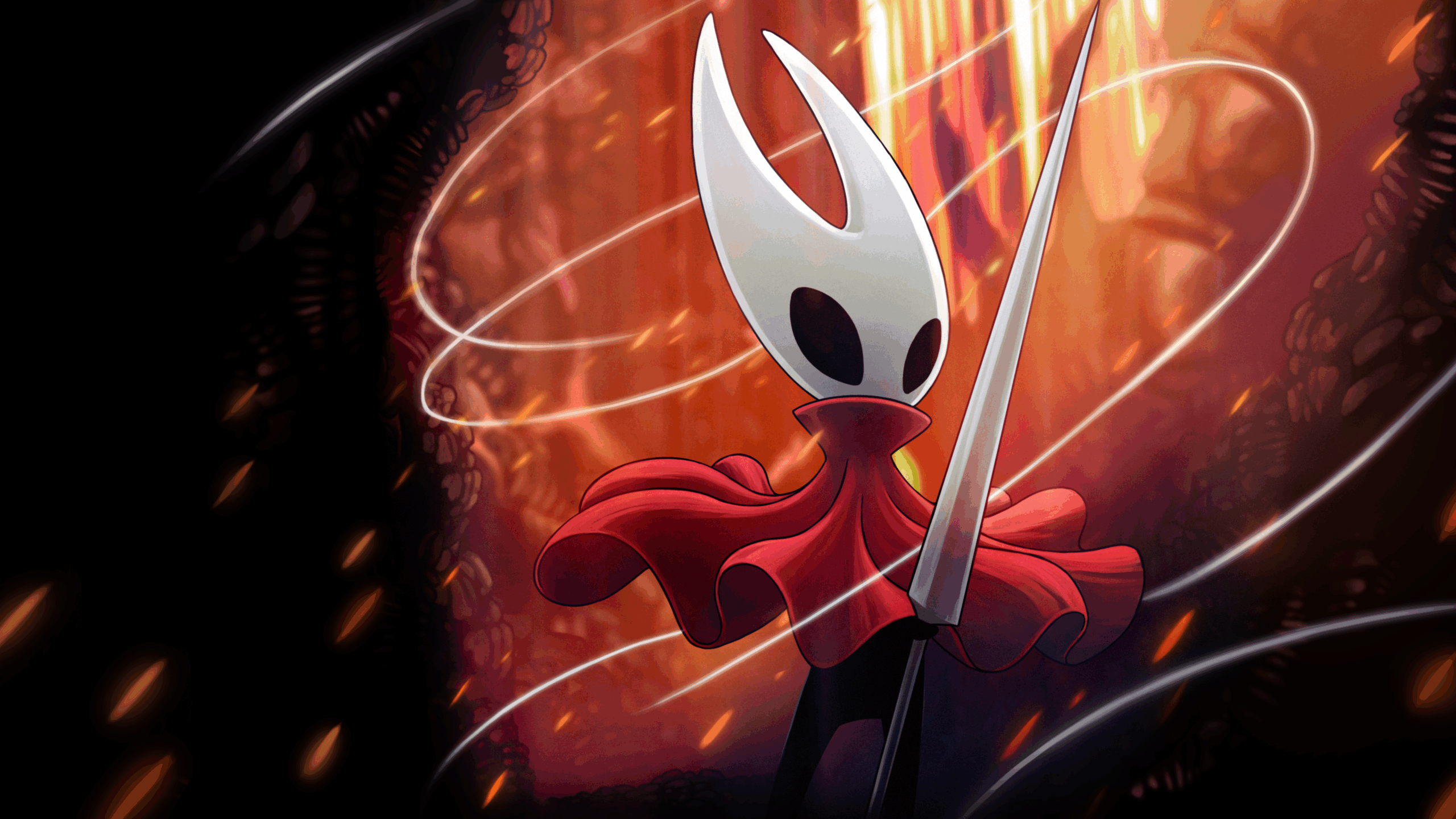Silksong is a game released by Team Cherry in September of 2025. Set in the land of Pharloom during its dying days, you play Hornet, a bug brought to this land unwillingly as she makes her way through Pharloom. Hornet learns that the higher power that brought her here is also that which controls its people through their blind devotion to a promised paradise in The Citadel. Many bugs make the pilgrimage there to challenge the despair of the world only to fall to hostile lands before it. Hornet later challenges this higher power which unintentionally leads to the seemingly inevitable end of the world as earthquakes rip through Pharloom and dangerous creatures of the wilds become more erratic.
What do you do when faced with the world ending like this?
Throughout Pharloom, you are introduced to many characters on a pilgrimage to The Citadel. This journey to reach the top of the world and be a part of a promised paradise is one of pain, suffering, and probable death. But the journey ends in a lie. The paradise they seek does not exist here; there are only halls filled with death and decay. The pilgrims are controlled through a false promise from the institution surrounding this higher power. As they fall, either during the journey or after finally arriving, the higher power makes this control literal by puppeteering them to serve in their death as “for Pharloom eternal, a bug who serves must never die.” In a dangerous world, the institution everyone puts their faith in is that which causes them to suffer.
As Hornet travels Pharloom and meets these pilgrims, you may want to attack and destroy that which controls them. But this isn’t the complete solution. Let’s look at Bellhart, a settlement that acts as a mid-point and rest stop for the pilgrimage. Upon arrival, its people have been strung up and placed in a catatonic state. Eventually Hornet finds the one causing this and defeats them, freeing the settlement. But what does this solve beyond their immediate problem? Now freed, they continue to act as a rest stop to help people continue their pilgrimage.
No, to truly move past the control over them they need something new to put their faith in, something that will help as the world around them crumbles. And that is each other. As Hornet continues to help the bugs of Bellhart, they begin to place more of their trust in her. Then instead of taking advantage of this trust, she denies any worship of herself, gets help of her own, and encourages them to look after one another. A community forms around this which strengthens the settlement and allows them to survive as the institution that once controlled them crumbles later in the game. Surviving in Pharloom depends on this time and time again, with not just Bellhart and other settlements needing this, but Hornet too. Even she, the most skilled of all those in Pharloom, would never have made it without these communities to improve her weapons and provide a reprieve from the dangers of the wilds. They even give her reason to fight for Pharloom’s sake and not just her own, the stoking of these communities required to reach Act 3 and truly save them. Silksong shows that without community, you cannot survive the end of the world.
But how does a community survive? A collection of bugs is not what makes a strong community as there are multiple settlements throughout Pharloom that aren’t, it’s in how they provide for one another. Looking at Bellhart again, there are many ways in which bugs do this. One resident, Pinmaster Plinney, is a weaponsmith who supports the town and Hornet by providing weapons and maintenance keeping them well defended. Another is Pondcatcher Reed who braves the wilds to catch food and bring it back for the other residents. Bellhart is also a central location that acts as a hub to send supplies to other settlements via Courier Tipp and Pill with Hornet’s assistance.

Shakra (left) defending Bellhart from the erratic foes of the wilds
Some of these bugs risk themselves to do all this, none more so in Bellhart than Shakra. Shakra is of a warrior tribe who travelled to Pharloom in chase of her master. During this journey, she came to find a base in Bellhart and can often be found here preparing for further journeys into the wilds. She is somewhat of a stranger in the settlement having arrived so recently and being from a completely different land. However, during her time in the town, she came to grow a connection to it, and upon the imminent destruction of Pharloom in Act 3, takes up arms to defend it. As the enemies of the wild become more erratic and dangerous, Shakra defends the settlement on multiple fronts. Pavo, Bellhart’s leader, says of her efforts that “our shells have stayed safe, though how long she can remain at that task… I do not dare consider.” She pushes to the edge of her ability to protect this settlement.
Constantly in Bellhart, bugs do what they can to ensure they all make it through the end of the world. And this is present elsewhere too, albeit after some growth. From the start of the game, Hornet will meet Sherma throughout Pharloom as he goes about his pilgrimage. The faith he has in The Citadel and its promised paradise is strong with him facing all manner of danger and sickness with faith and song. Although Sherma doesn’t see it, his faith is misplaced. He sings to heal bugs with his faith, but they die not long after he leaves, and his progress to The Citadel is a mix of luck and assistance from Hornet. Only once he reaches The Citadel and makes it to The Songclave, a settlement of those who managed to complete their pilgrimage, does he realise his error. Now at the end of his pilgrimage, Sherma stays with the suffering of the world rather than passing by it. No longer able to leave after his song, he sees that it does not work and that the higher power will not save them. With help from Hornet, Sherma finally understands that he must do what he can for the bugs of The Songclave himself and sets off for healing supplies. Eventually, he becomes the leader of the town using the resources of The Citadel and garbing himself in their clothes, but for the sake of his community and through his own power.

Sherma (right) overlooking The Songclave
However, being able to push this hard for one another is of great difficulty. Staying at your limits in times of need cannot be done out of pure obligation for your community, especially in the dark of a seemingly inevitable end. Constantly throughout Silksong, communities come together and experience moments of shared joy and connection to push back against this darkness. In Bony Bottom, the first settlement you come across and the starting point for those on a pilgrimage, a small community has formed around those maintaining it. These people pool resources together to create a statue welcoming newcomers to the settlement showing their connection to this place. The connection they have with each other is also on display as they hold a service for one bug that died during an attack from a beast, making song together in mourning. The care for their home and one another is what makes it a community worth sacrifice.
The Flea Caravan is a different example of this. The caravan is exactly as it sounds, a travelling group of fleas making their way towards The Citadel as a haven to settle. Hornet can save lost fleas throughout Pharloom, sending them back to the caravan and filling it out further. As more fleas are saved and the caravan grows livelier, it makes its way further through Pharloom. When they reach The Citadel and realise it is not a place to settle, with Hornet’s assistance, they instead move to a place they deem Fleatopia creating a strong community based on this long journey. However, upon entering Act 3 and the world seeming doomed, the fleas show another aspect of keeping a community strong. They hold The Festival of the Flea, a celebration of the fleas and their community. They sing, drink, and play games not in spite of the end times, but because of it. Rather than falling into despair, they remember the life they have. This shared joy is another way in which community is kept strong and allows for the difficulties of protecting it to never feel like a sacrifice.

The drink and feast of The Festival of the Flea
Throughout Pharloom you see the way in which the higher power of the Citadel has corrupted, puppeteered, and destroyed its people by filling them with despair. This despair is then challenged through a blind devotion to the institution that put them in this state. But Silksong doesn’t wallow in this despair, it doesn’t choose to align itself with this deep sadness. Instead, it chooses to face the end through its people and what we can do for each other. It chooses to pick joy in its darkest moments. It chooses to persevere and fight how you can against the end. The end of the world may seem inevitable, but the end is in the future until it isn’t.
So, what does Silksong say about the end? Help each other, find joy, and fight back because if you don’t, that is when the end of the world comes.
2025-09-23 – jam-alade
